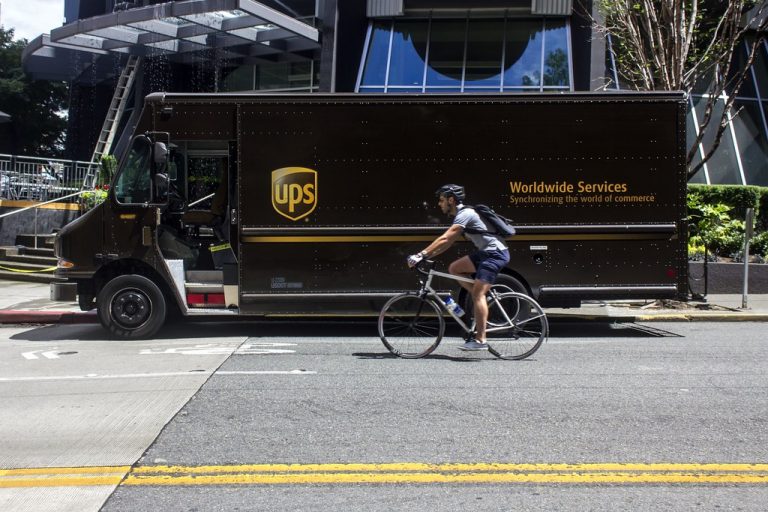Published on March 25, 2024

Originally reported by Kristin Schwab for Marketplace.
It’s a rainy evening in New York City, as in flash flood warning kind of rain. But it’s nothing Michael Singh hasn’t seen.
“Yes, rain, snow, high winds, all of it,” said Singh, who’s been a bike messenger for seven years and started with Amazon a few months ago. He begins his shift in a warehouse where he loads boxes onto an e-bike trailer the size of a bathtub. “This is a little light today. I’m guessing because of the rain.”
This cargo bike delivery program is a pilot with the City of New York. In a place as dense as Manhattan, trucks aren’t efficient.
“You know, going stop by stop, double parking, congesting the streets,” said Jessica Schumer, who leads New York City public policy for Amazon.
It’s a problem that’s gotten worse in the last few years. Between 2019 and 2020, U.S. parcel volume grew almost 40%, to 20 billion packages. By 2028, as many as 32 billion packages are projected to be shipped in the U.S.
And it’s not just about how much people are ordering, but where they’re getting things delivered. Before the pandemic, parcel delivery was often concentrated in business districts. A lot of people had stuff delivered to their office to avoid porch pirate theft. Now, more one-off deliveries are happening in residential areas.
“There’s no doubt that e-commerce and the ability to have goods delivered directly to your home has changed the way people shop in cities,” said Kelly Rula, who directs the Urban Freight Lab at the University of Washington. “It’s had upstream effects on how the transportation system was impacted.”
In Manhattan, for instance, truck speeds dropped to as low as seven miles an hour.
“That was a very dramatic change that cities had to grapple with kind of immediately,” said Rula.
This isn’t just an issue in New York City. Miami, Boston, Portland and other cities are running cargo bike programs to try to make the most expensive and emissions heavy piece of the logistics chain — last mile delivery — more efficient.
Rula said retailers and shipping companies need to be part of the solution, too.
“It takes an ecosystem to be successful from a business perspective,” she said. “And I think we’ve unfortunately seen some failures because this is not necessarily a slam dunk profitability pay at this point.”
Read more here.
Cities are running cargo bike programs to try to make the most expensive and emissions heavy piece of the logistics chain — last mile delivery — more efficient.